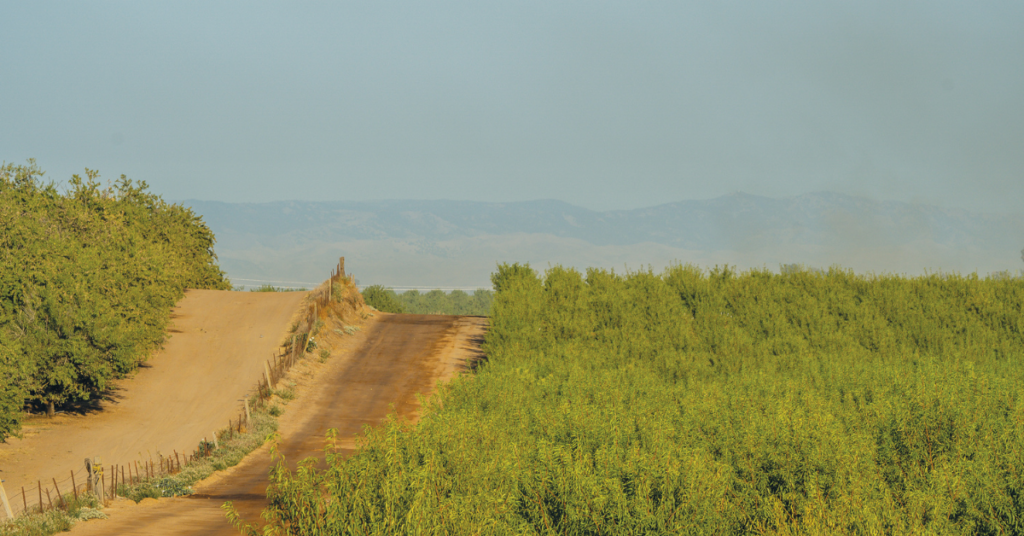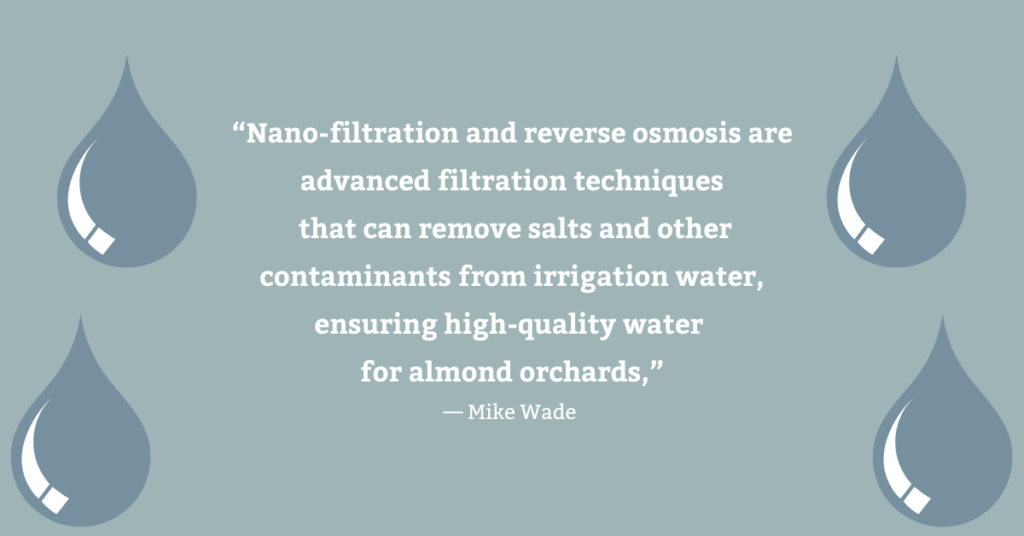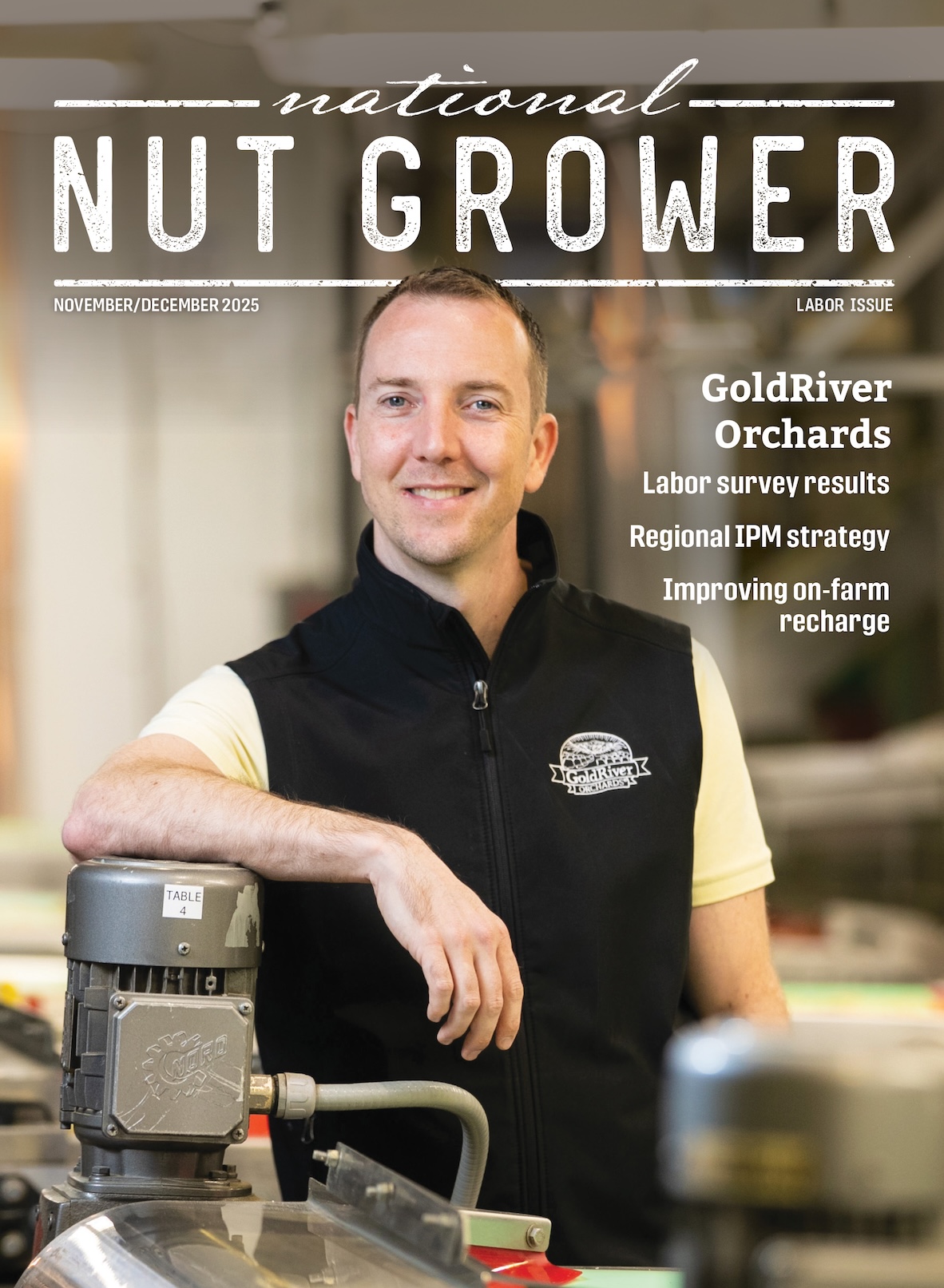
September/October 2024
Maintaining and managing water quality in almond orchards
Water quality management in almond orchards is important for ensuring a successful crop.
Mike Wade, executive director of the California Farm Water Coalition, noted most efforts focus largely on controlling salinity and elements, such as boron, which can be toxic and problematic at higher levels.
“Optimum water quality for any crop can help improve efficiency because crop production is maximized per unit of applied water,” he said.
Hardeep Singh, food systems advisor for UC Cooperative Extension, Central Sierra, said nitrates and salts present in the water are much of the concern to the growers and they monitor them by laboratory testing.
That’s why farmers or their PCAs (pest control advisers) test the water samples for nitrates, salts, pH and other biological composition of the water. Most times, this is part of the annual package with the PCA/CCA (certified crop advisers) for all services.
“Growers use the data on nitrates for nitrogen budgeting and for application of control measures if there were any major contaminants in the water,” Singh said. “Water quality data may sometimes help with the leaching requirements.”
Emerging technologies in almond grower water management
Farmers often collaborate with universities, agricultural Extension services and organizations including the Almond Board of California to stay updated on best practices and innovations in water management. Once a technology is available and affordable, there is generally widespread adoption.
“With the help of on-farm demonstration research studies funded by USDA-NRCS, university researchers are collaborating with almond growers on water conservation practices,” Singh said.
There have been many new technologies that almond growers have been experimenting with to address water management issues.

“Nano-filtration and reverse osmosis are advanced filtration techniques that can remove salts and other contaminants from irrigation water, ensuring high-quality water for almond orchards,” Wade said, noting some of the recent advancements.
Variable rate irrigation (VRI) technology enables farmers to apply water precisely where it is needed in their almond orchards, reducing water wastage and ensuring that each part of the orchard receives the optimal amount of water.
“Smart irrigation controllers use data from weather stations and soil moisture sensors to automatically adjust irrigation schedules,” Wade said. “By optimizing irrigation times and amounts, systems like this help prevent over-irrigation and reduce runoff that can affect water quality in other areas.”
It’s important that almond growers intergrade water quality data with other agronomic factors, such as soil health and nutrient management, to optimize overall orchard productivity.
“Precision application of fertilizers, often through fertigation (injecting fertilizers into the irrigation system), is a practice that helps make sure that nutrients are delivered efficiently to the plants directly through the irrigation system, reducing the risk of nutrient runoff,” Wade said.
Singh is keeping tabs on a grower who is using AQUA 4D, which he is testing at his orchard for water quality monitoring and management.
“According to the company, AQUA 4D can remove bad minerals, reduce soil compaction, bacteria and nematodes in the soil when irrigated with AQUA 4D treated water,” he said.
Almond grower irrigation management
The almond industry has been improving crop water use efficiency with more precise irrigation management, Wade noted.
“With 80% of almond growers using micro-irrigation, crop water use among almond growers has declined by 33% from the 1990s to the 2010s, and the industry has committed to another 25% reduction by 2025,” he said.
Singh said that some growers use regulated deficit irrigation around almond hull split stage, while others use ET-based irrigation scheduling as a guidance with other irrigation scheduling techniques. He also knows of one grower using subsurface drip in almonds that could result in a considerable amount of water savings.
The California Almond Board offers a program where growers conduct self-assessments of their farming operations, and irrigation is a big part of that. Currently, 425,000 acres have been assessed, which represents approximately one third of all California acreage.
“Micro-irrigation, between drip and micro-sprinkler, we find 81% of growers use one of the two,” said Tom Devol, the board’s senior manager, field outreach and education. “Water scarcity has been an integral part of tree nut production for a long time, and most tree nut growers are pretty aggressive about how they are managing water, and the type of irrigation is a big part of that.”
There are several components when it comes to monitoring for irrigation needs. Tree-base sensors, starting with the pressure chamber, have been used for many years to monitor stress at the tree level.
“Understanding the tree stress is a big part of this all, and that’s done with pressure chambers or plant-stress sensors that measure the actual stress of the tree,” Devol said. “Weather monitoring — ET monitoring — is also heavily used in the industry, with almost 90% of growers looking at this to help them understand what they need to replace.”
Soil moisture monitoring is the third important leg as it helps almond growers determine if they’ve effectively gotten the water back into the ground.
“It is common for growers to leverage all three of these tools,” Devol said. “Most growers also use some sort of software-based scheduling tool to help them schedule out irrigation.”
Almond grower regulatory requirements
The Regional Water Quality Control Board sets standards for nutrient management, including the amount of natural or synthetic fertilizers that can be applied to a field. That helps prevent over fertilization, which could leach to groundwater or runoff from a field into other lands or waterways. Singh added that growers are required to report the amount of nitrogen fertilizer applications to water coalitions such as Kings River in the valley.
“They also need to report the amount of nitrogen in the irrigation water and therefore growers have to get their water tested annually,” he said. “This is done by the growers themselves or their CCA.”
Looking ahead, Singh believes that having more data and research on remote sensing and satellite imagery will help growers understand the issues and management of water quality better and therefore will result in greater success by almond growers concerning water management.









